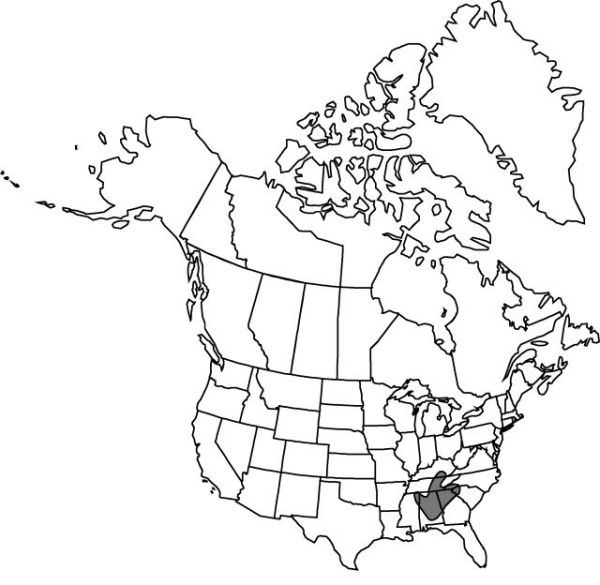Platanthera integrilabia
Native Orchids U.S. & Canada, 186. 1975.
Plants 50–80 cm. Leaves 2 (–3), spreading to ascending, on basal portion of stem, abruptly reduced to bracts distally; blade lanceolate to elliptic, 12–23 × 1–3.2 cm. Spikes rather lax. Flowers resupinate, showy, white; lateral sepals reflexed; petals oblong, margins entire; lip porrect, spatulate to lance-spatulate, without basal thickening, 10–15 × 2.5–4 mm, margins slightly lacerate to subentire; spur slenderly cylindric, scarcely clavate, 35–60 mm; rostellum lobes directed forward, spreading, angular; rostellum lobes slenderly curving forward, slightly spreading, angular-elongate, long; pollinaria with stalks curved forward; pollinia remaining enclosed in anther sacs; viscidia orbiculate; ovary slender, ca. 16–22 mm.
Phenology: Flowering (Jun–)Jul–Aug.
Habitat: Wet wooded flats, seeping slopes, marshes, sphagnum bogs
Elevation: mostly 100–700 m
Distribution

Ala., Ga., Ky., Miss., N.C., S.C., Tenn.
Discussion
Of conservation concern.
The description of Platanthera integrilabia is based on a limited sample and is likely too restrictive.
Flowers of this species are nocturnally sweet-scented. The vegetative habit is distinctive, with leaves restricted to the base of the stem and a relatively few-flowered inflorescence borne atop a tall bracted scape. In addition to the normal tuberoid, roots often enlarge distally to form bud-bearing tuberoids at a marked distance from the parent stem, giving rise to diffuse clonal colonies.
Selected References
None.